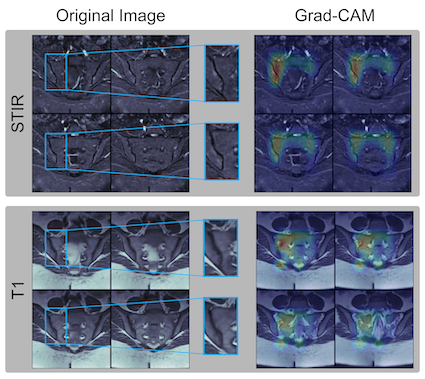Our team developed a deep learning pipeline for the automated detection of active inflammatory and structural changes indicative of axial spondyloarthritis (axSpA) on biparametric MRI of the sacroiliac joints. The pipeline was trained on a large, heterogeneous dataset of 477 MRIs from four different study populations and tested on an independent dataset of 116 MRIs from the ASAS classification cohort.
The pipeline employs a 3D U-Net for image denoising and artifact reduction, followed by dual 3D ResNet-101 networks for classification of active inflammatory and structural lesions compatible with axSpA. The models were evaluated against the consensus of six experienced readers for the training and validation datasets and seven experienced readers for the test dataset.
Our findings, published in Radiology (https://doi.org/10.1148/radiol.212526), demonstrate that the models achieved high accuracy in detecting active inflammatory changes (AUC 0.91), ASAS-compatible changes (AUC 0.88), and structural lesions (AUC 0.89) on the test dataset, despite differences in disease prevalence, scanner types, and protocols compared to the training data. The models‘ performance was close to that of individual experienced readers.
This study highlights the potential of deep learning as a supportive tool for detecting axSpA-related changes on MRI, especially for non-specialized hospitals. The pipeline’s robust performance across heterogeneous datasets suggests good generalizability to real-world clinical settings.
